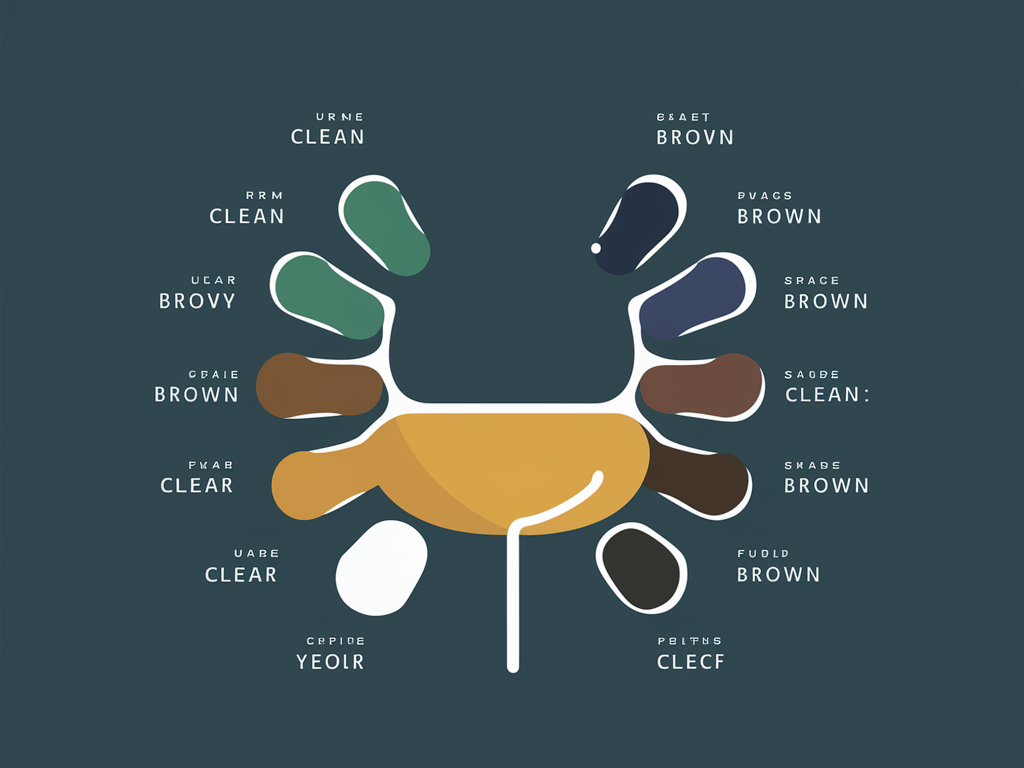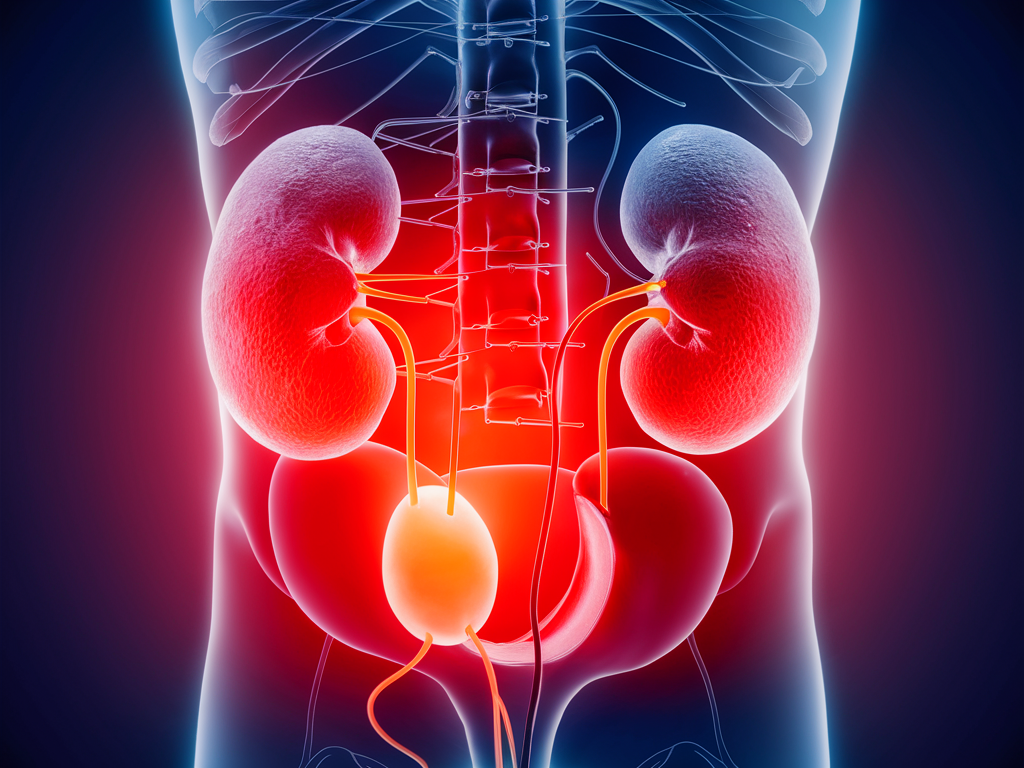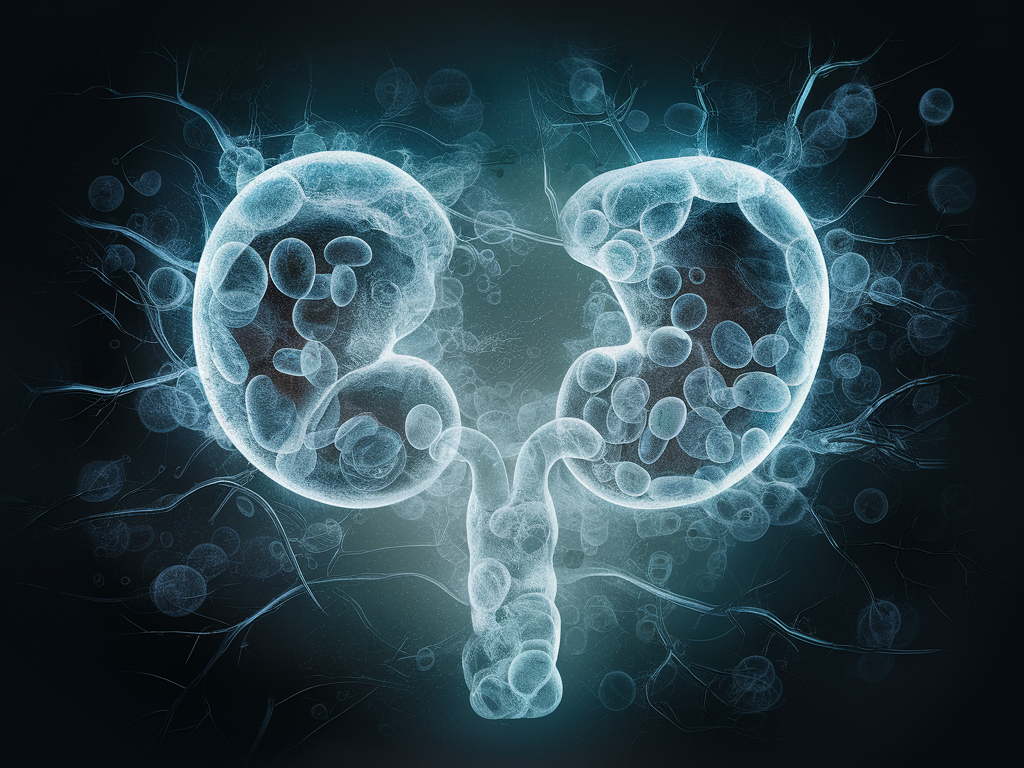Urine color can be a window into your body’s health status, offering valuable insights about hydration, diet, medication effects, and potential medical conditions. Often overlooked during daily bathroom visits, the color of your urine serves as a simple yet powerful health indicator that’s worth paying attention to. This comprehensive guide examines what different urine colors reveal about your health, helping you understand when a color change is harmless and when it might signal something requiring medical attention.
Your kidneys filter waste products, excess water, and other impurities from your blood, creating urine that carries these substances out of your body. The color, density, and composition of your urine can provide valuable clues about your overall health status, hydration levels, and potential underlying medical conditions.
Urochrome, a yellow pigment produced during the breakdown of hemoglobin, gives urine its characteristic color. The concentration of urochrome directly correlates with your hydration status—more diluted urine appears lighter, while more concentrated urine appears darker. Beyond hydration, various factors including medications, foods, vitamins, and medical conditions can affect urine color.
The urinary system consists of the kidneys, ureters, bladder, and urethra. Your kidneys filter approximately 120-150 quarts of blood daily to produce 1-2 quarts of urine. Understanding how this system functions helps explain why changes in urine characteristics can be significant health indicators.
While occasional urine color changes are often harmless, persistent changes warrant medical attention, especially when accompanied by other symptoms like pain, fever, or unusual odor. Contact a healthcare provider immediately if you notice blood in your urine, experience burning during urination, or if dark or unusual colored urine persists for more than 24-48 hours.
Clear or Transparent Urine: Are You Overhydrated?
Clear, colorless urine resembling water might seem ideal, but it could indicate overhydration. While staying hydrated is important, excessive water consumption can dilute essential electrolytes in your bloodstream, potentially leading to hyponatremia (low sodium levels).
What Causes Clear Urine?
- Overhydration: Drinking more water than your kidneys can process dilutes waste products and urochrome pigment.
- Diuretic medications: Water pills, certain blood pressure medications, and some antidepressants increase urine production.
- Diabetes insipidus: This rare condition disrupts the body’s fluid regulation, causing excessive thirst and large volumes of diluted urine.
While clear urine occasionally is generally not concerning, consistently colorless urine might indicate you’re drinking more water than necessary. For most healthy adults, the “8×8 rule” (eight 8-ounce glasses daily) provides adequate hydration, though needs vary based on activity level, climate, and individual health factors.
If clear urine persists despite reducing fluid intake, or if it’s accompanied by frequent urination (especially at night), unusual thirst, or fatigue, consult a healthcare provider to rule out conditions like diabetes insipidus or kidney function issues.
Pale Straw to Transparent Yellow: The Ideal Urine Color
Pale straw to transparent yellow urine generally indicates optimal hydration and kidney function. This light yellow color shows your body contains the right balance of water to waste products, suggesting your hydration levels are in the healthy range.

This color range represents well-functioning kidneys efficiently filtering blood and producing properly concentrated urine. The pale yellow comes from urochrome (also called urobilin), a pigment produced when your body breaks down hemoglobin from old red blood cells.
It’s normal for urine color to fluctuate throughout the day. Morning urine typically appears darker because it’s more concentrated after hours without fluid intake. As you consume fluids throughout the day, subsequent urination will likely show lighter coloration.
Factors that might affect even well-hydrated urine include vitamin supplements (especially B vitamins which can intensify yellow color), certain foods, and medications. These variations are typically harmless and resolve quickly.
Dark Yellow to Amber: Dehydration Warning Signs
When urine appears dark yellow to amber, it serves as your body’s signal that you need more fluids. This deeper coloration indicates concentrated urine with a higher ratio of waste products to water, reflecting mild to moderate dehydration.
Common Causes of Dark Yellow to Amber Urine
- Insufficient water intake: The most common cause, especially during busy days when fluid consumption becomes an afterthought.
- Excessive sweating: Intense exercise, hot weather, or occupational heat exposure can rapidly deplete fluid levels.
- Fever or illness: Elevated body temperature increases metabolic rate and fluid loss, while vomiting or diarrhea can quickly cause dehydration.
Addressing dark yellow urine is straightforward: increase your fluid intake, preferably with water. Sports drinks can help replace electrolytes after intense exercise. Create habits that promote regular hydration, such as keeping a water bottle visible, setting reminders, or using hydration tracking apps.
While occasional dark yellow urine usually indicates simple dehydration, consistently dark urine despite adequate fluid intake may signal underlying health issues. Contact a healthcare provider if dark urine persists for more than 24 hours despite increased fluid consumption, or if it’s accompanied by symptoms like fatigue, dizziness, reduced urination, or confusion.
Orange Urine: Medications, Dehydration, or Liver Issues?
Orange urine ranges from light peach to deep amber-orange and can indicate several conditions ranging from benign to potentially serious. This distinct coloration warrants attention, especially if it persists or appears suddenly.
Potential Causes of Orange Urine
- Severe dehydration: Extremely concentrated urine can appear orange rather than just dark yellow.
- Liver issues: When bile pigments enter urine due to liver dysfunction or bile duct problems, urine may develop an orange-yellow hue.
- Medications: Several prescription drugs can turn urine orange, including:
- Rifampin (tuberculosis treatment)
- Phenazopyridine (urinary pain reliever)
- Sulfasalazine (inflammatory bowel disease treatment)
- Some laxatives and chemotherapy drugs
- Foods and supplements: Carrots, sweet potatoes, pumpkin, and high-dose vitamin C can contribute to orange-tinted urine.
Watch for accompanying symptoms like yellowing skin or eyes (jaundice), abdominal pain, nausea, extreme fatigue, clay-colored stools, or dark urine that doesn’t improve with hydration. These could indicate liver dysfunction requiring prompt medical evaluation.
If you’re taking medications known to cause orange urine, this color change is expected and typically harmless. However, orange urine without an obvious cause or that persists beyond 2-3 days warrants medical consultation, as it could indicate gallbladder, liver, or bile duct issues requiring treatment.
Red or Pink Urine: Blood or Benign Causes?
Red or pink-tinged urine can be alarming, as it might indicate blood presence (hematuria) or could result from less concerning factors like certain foods or medications. Distinguishing between serious and harmless causes is crucial.

Potential Causes of Red or Pink Urine
- Blood in urine (hematuria): May indicate:
- Urinary tract infection
- Kidney infection or inflammation
- Kidney or bladder stones
- Enlarged prostate
- Kidney disease
- Urinary tract trauma
- Cancer of the kidney, bladder, or prostate (less commonly)
- Foods: Beets, blackberries, rhubarb, and foods with red dyes can temporarily color urine red or pink.
- Medications: Rifampin, phenazopyridine, laxatives containing senna, and some chemotherapy drugs can cause reddish urine.
To distinguish between harmless and concerning causes, consider recent diet and medications. Food-based color changes typically resolve after 24-48 hours. If you suspect medication is causing the color change, consult your healthcare provider before discontinuing any prescribed medications.
Seek immediate medical attention if red urine is accompanied by pain during urination, abdominal or back pain, fever, fatigue, or urinary urgency. True hematuria (blood in urine) requires proper diagnosis to identify the underlying cause, which might involve urinalysis, imaging studies, or cystoscopy depending on your symptoms and medical history.
Blue or Green Urine: Rare but Significant Color Changes
Blue or green urine represents some of the most unusual urine color changes and, while rare, can indicate specific medical conditions, medication effects, or dietary influences. These striking colors often cause concern, but many cases have benign explanations.
Medical Causes of Blue or Green Urine
- Pseudomonas infections: These bacterial infections, particularly in urinary catheters, can produce pigments that turn urine blue-green.
- Medications: Several drugs can cause blue or green urine, including:
- Amitriptyline (antidepressant)
- Propofol (anesthetic)
- Indomethacin (anti-inflammatory)
- Methylene blue (used in certain medical tests)
- Promethazine (antihistamine)
- Dyes in food or medications: Artificial colorings in foods, candy, or medication coatings can temporarily alter urine color.
- Rare medical conditions: Familial hypercalcemia (blue diaper syndrome) or certain rare liver conditions can cause blue-tinged urine.
While often harmless, blue or green urine warrants medical attention if it persists beyond 24-48 hours, appears without an obvious cause, or is accompanied by additional symptoms like pain, fever, unusual odor, or changes in urination habits.
Healthcare providers may conduct urinalysis, urine culture, or other diagnostic tests to determine whether infection, metabolic disorders, or other medical conditions are responsible for these unusual color changes.
Brown or Cola-Colored Urine: Potential Serious Conditions
Brown or cola-colored urine represents some of the most concerning urine color changes, as this dark coloration often indicates significant underlying conditions requiring prompt medical attention. The deep brown or tea/cola appearance may indicate the presence of blood that has oxidized or other serious issues.
Potential Causes of Brown Urine
- Liver disease: Conditions like hepatitis and cirrhosis can cause bilirubin to appear in urine, creating a brown coloration.
- Severe dehydration: Extremely concentrated urine can appear brown rather than amber.
- Rhabdomyolysis: This serious condition involves muscle breakdown releasing myoglobin into the bloodstream, which can appear as brown or tea-colored urine.
- Porphyria: This group of rare inherited disorders affects hemoglobin production and can cause darkened urine.
- Melanoma: In rare cases, advanced melanoma can cause brown urine due to melanin pigments.
- Medications and foods: Antimalarial drugs, metronidazole, nitrofurantoin, fava beans, rhubarb, and aloe can darken urine.
Watch for accompanying symptoms like jaundice, extreme fatigue, unexplained weight loss, muscle pain or weakness, abdominal pain, or fever. These additional signs can help healthcare providers determine the underlying cause.
Due to the potential seriousness of conditions causing brown urine, prompt medical evaluation is essential. Diagnostic approaches may include comprehensive blood testing, liver function tests, urinalysis, and potentially imaging studies depending on your symptoms and medical history.
Cloudy or Milky Urine: Infections and Beyond
Healthy urine is typically clear or transparent. When urine appears cloudy, milky, or turbid, it suggests the presence of substances that don’t belong—such as white blood cells, bacteria, fat, or minerals. This change in transparency rather than color can indicate several underlying conditions.

Causes of Cloudy or Milky Urine
- Urinary tract infections (UTIs): The most common cause, as bacteria and white blood cells create cloudiness.
- Kidney stones: Minerals forming stones can cause crystalluria (crystals in urine) appearing as cloudiness.
- Prostate issues: Conditions like prostatitis or enlarged prostate can lead to cloudy urine in men.
- Sexually transmitted infections: Gonorrhea, chlamydia, and other STIs can cause cloudy urine and urethral discharge.
- Dehydration: Concentrated urine may appear slightly cloudy due to higher mineral content.
- Vaginal discharge: In women, normal discharge may mix with urine causing temporary cloudiness.
- Dietary factors: High-calcium foods or excessive vitamin D consumption can increase urinary calcium, creating cloudiness.
Monitor additional symptoms like painful urination, frequent urination, strong-smelling urine, fever, lower abdominal pain, or discharge. These accompanying signs help determine the potential cause and urgency.
For proper diagnosis, healthcare providers typically perform urinalysis to check for bacteria, white blood cells, proteins, and other abnormal components. Urine cultures may identify specific bacterial infections, while additional imaging might be necessary if structural issues like kidney stones are suspected.
Treatment depends entirely on the underlying cause—antibiotics for bacterial infections, hydration for dehydration-related cloudiness, or specific treatments for prostate issues or kidney stones. Never ignore persistent cloudy urine, especially when accompanied by discomfort or other symptoms.
Conclusion: Monitoring Urine Color for Better Health
Your urine color provides a simple yet powerful window into your body’s internal functioning. While pale yellow to transparent yellow indicates optimal hydration and good kidney function, variations from this norm can offer important health insights:
- Clear urine suggests potential overhydration
- Dark yellow to amber indicates dehydration
- Orange may signal medication effects, severe dehydration, or liver issues
- Red or pink could indicate blood presence requiring attention
- Blue or green typically relates to medications or dyes
- Brown or cola-colored often indicates serious conditions needing prompt evaluation
- Cloudy or milky frequently suggests infection or inflammation
For optimal urinary health, maintain proper hydration by drinking enough fluids to produce light yellow urine. Most adults need 8-10 cups (64-80 ounces) of fluids daily, with needs increasing during exercise, hot weather, illness, or pregnancy.
Contact a healthcare provider if you experience persistent urine color changes (lasting more than 2-3 days), especially when accompanied by pain, fever, strong odor, or changes in urination frequency or volume. Always seek immediate medical attention for visible blood in urine, dramatic color changes without explanation, or symptoms of urinary tract infection.
Remember that while monitoring urine color provides valuable health insights, it’s just one aspect of comprehensive health awareness. Regular check-ups, healthy lifestyle habits, and prompt attention to unusual symptoms remain essential components of overall wellness.

